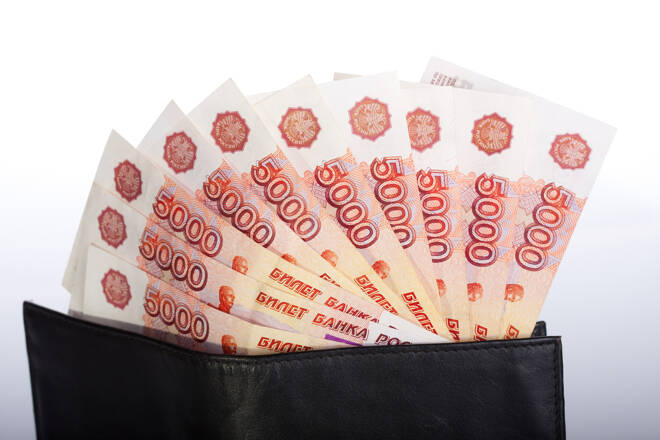Advertisement
Advertisement
Russia: Tougher Sanctions Widen Disconnect Between Rouble and Economy, Increasing Retaliation Risk
By:
The Russian rouble’s fortunes are increasingly disconnected from the health of the Russian economy as international sanctions tighten in response to the war in Ukraine.
The EU’s proposed new sanctions are likely to inflict further damage on the Russian economy depending on details of a final agreement, with increasing risk of retaliatory measures from Russia.
To take stock of Russia’s economic fortunes in the third month of its full-scale war in Ukraine, I address several questions around prospects for growth with the sanctions in place, the factors explaining the rouble’s recovery, what impact new aEU sanctions might have and what the Russian authorities could do in response. Download the full report
Rouble recovery – Is it sustainable?
Two main factors explain the recovery of the rouble. First, high foreign-currency inflows from oil and gas exports – as energy prices have soared – create steady demand for the Russian currency.
Secondly, efforts of the Central Bank of Russia to prevent capital flight through capital controls and higher interest rates, while they are working for now, come at cost of tighter financial conditions than before the sanctions due to elevated credit spreads and low market liquidity, decoupling economic and financial-market activity from the currency’s fortunes.
Russia: rouble exchange rate vs sovereign credit default swap (CDS) spreads
What are Russia’s near- and medium-term growth prospects?
We project Russia’s economic output to contract by at least 10% this year – the steepest decline since 1994 – and stagnate in 2023, knocking the economy back to levels last seen on the eve of the global financial crisis of 2008. To blame are the collapses in private consumption, in investment and in imports as sanctions have taken hold.
Russia’s important non-extractive industries – machinery and electrical equipment, computers, cars, pharmaceuticals – are reliant upon imported components. The share of foreign value added exceeds 50% in these industries, with about half coming from the EU, the US, the UK, Canada and Japan, much of which cannot be easily replaced, by imports from China or local alternatives.
In the absence of significant economic restructuring, and assuming sanctions remain in place, Scope Ratings expects Russia’s medium-run growth potential to moderate to 1-1.5% a year (from 1.5-2.0%), far below that of most of central and eastern Europe where living standards are far higher.
The EU proposes new sanctions – How tough are they?
In the short term, possibly higher energy prices should help offset the impact of an EU embargo on Russian oil imports.
In the longer term, an EU boycott of Russian oil is likely to imply significant costs for the Russian energy sector and real economy in terms of rouble convertibility, depending on the details of a final agreement, with some EU member states objecting to a full boycott of Russian oil, suggesting the final agreement might be softer than initially expected.
Countermeasures: What steps might Russian authorities take?
Russia is likely to expand economic retaliation against EU members as it seeks alternative buyers of its energy in Asia, but a complete replacement of the European market is out of reach any time soon due to significant transport and logistical constraints.
Russa’s energy infrastructure is predominantly geared to the west. Immediate expansion of pipeline oil supply to China is limited due to capacity constraints. As for oil supplied by tanker, while China’s independent refiners may be attracted by Russian oil at discounts, state-owned commodity traders may be less so due to concerns around secondary sanctions.
For a look at all of today’s economic events, check out our economic calendar.
Levon Kameryan is Senior Analyst in Sovereign and Public Sector ratings at Scope Ratings GmbH.
About the Author
Levon Kameryancontributor
Levon graduated with a M.Sc. in International Economics and Public Policy from the University of Mainz in 2016. Levon worked previously as an economist at the Central Bank of Armenia.
Did you find this article useful?
Latest news and analysis
Advertisement
